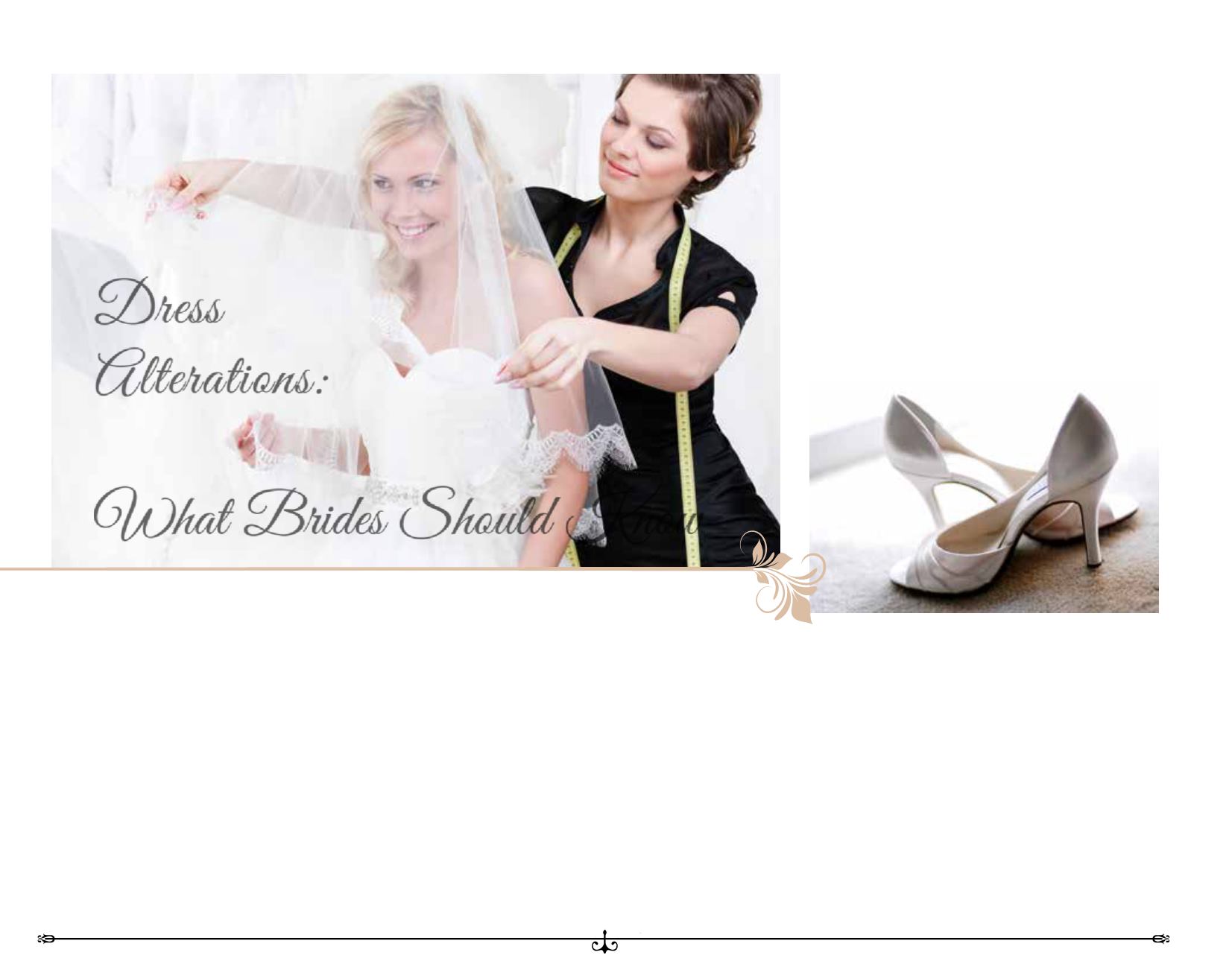
F A S H I O N S , J E W E L R Y , A C C E S S O R I E S F O R M E N & W O M E N
C H I C A G O W E D D I N G & P A R T Y R E S O U R C E
42
No dress is aisle-ready off the rack. Follow this primer on the
nips and tucks to make a gown perfect
By Anna Sachse, CTW Features
WHAT YOU MIGHT NEED
The most common alteration requests are shortening or
hemming a dress, taking in the sides and adding a bustle.
You can also been add length to a gown, create a bottom
that can come off to leave a shorter reception version of the
dress, and add a capelet. Vintage, heirloom or used dresses
often have special requirements like reducing the fullness of
a skirt, removing a long train, or taking off the sleeves and
changing the neckline to update the style, Trickey adds.
Other ways to personalize your dress include adding straps
(spaghetti, halter or two-versus-one), sleeves (cap, short or
long) and trading out a zipper for a corset back.
If your dress is way too small – many gowns come with a
minimal seam allowance to allow for changes of about one
size up or down – you can have a corset back installed or side
panels put in when matching fabric is available. But these
and other major alterations aren’t always possible and may
affect the gown’s integrity or silhouette. Even if you have
weight loss goals, purchase the dress that fits you now, as
it’s easier to eliminate a little fabric than make it magically
appear.
TIMING
Make your alterations appointment the day you purchase
your dress. Ten to 12 weeks before the wedding is ideal in
case multiple fittings are needed. Aim to have your dress
back in your hands two weeks before the event.
WHAT TO BRING
Your bra, shapewear, slip and shoes can all affect the look
and fit of your gown, so definitely bring the actual items you
plan to wear on your wedding day.
WHAT YOU’LL SPEND
The price range for average alterations is approximately $100
to $400 dollars. Include the cost of likely alterations when
determining a budget for your gown and keep in mind that
buying a $99 sale gown that has to be completely reconstruct-
ed to fit you won’t save you money – or stress – in the end.
Copyright © CTW Features
Dress
Alterations:
What Brides Should Know


